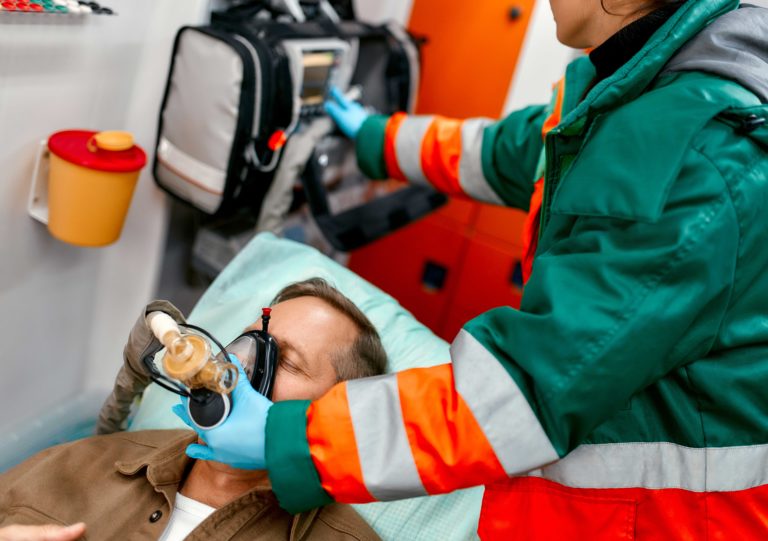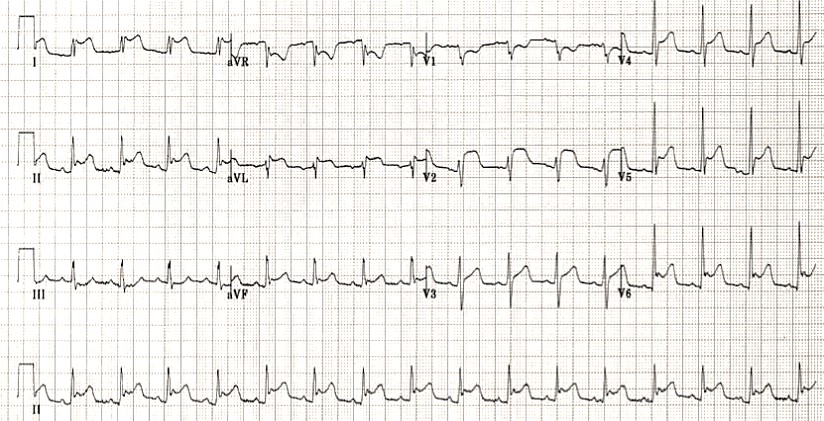Charlson Comorbidity Index (CCI) Online Calculator

Charlson Comorbidity Index predicts 10-year survival in patients with multiple comorbidities.
| Variable | Points |
| Age | |
| <50 years | 0 |
| 50–59 years | +1 |
| 60–69 years | +2 |
| 70–79 years | +3 |
| ≥80 years | +4 |
| Myocardial infarction History of definite or probable MI (EСG changes and/or enzyme changes) | +1 |
| Congestive heart failure Exertional or paroxysmal nocturnal dyspnea and has responded to digitalis, diuretics, or afterload reducing agents | +1 |
| Peripheral vascular disease Intermittent claudication or past bypass for chronic arterial insufficiency, history of gangrene or acute arterial insufficiency, or untreated thoracic or abdominal aneurysm (≥6 cm) | +1 |
| Cerebrovascular accident or Transient ischemic attack History of a cerebrovascular accident with minor or no residua and transient ischemic attacks | +1 |
| Dementia Chronic cognitive deficit | +1 |
| Chronic obstructive pulmonary disease | +1 |
| Connective tissue disease | +1 |
| Peptic ulcer disease Any history of treatment for ulcer disease or history of ulcer bleeding | +1 |
| Liver disease Severe = cirrhosis and portal hypertension with variceal bleeding history, moderate = cirrhosis and portal hypertension but no variceal bleeding history, mild = chronic hepatitis (or cirrhosis without portal hypertension) | None 0 |
| Mild +1 | |
| Moderate to severe +3 | |
| Diabetes mellitus | None or diet-controlled 0 |
| Uncomplicated +1 | |
| End-organ damage +2 | |
| Hemiplegia | +2 |
| Moderate to severe chronic kidney disease Severe = on dialysis, status post kidney transplant, uremia, moderate = creatinine >3 mg/dL (0.27 mmol/L) | +2 |
| Solid tumor | None 0 |
| Localized +2 | |
| Metastatic +6 | |
| Leukemia | +2 |
| Lymphoma | +2 |
| AIDS | +6 |
Charlson Comorbidity Index assess by addition of the selected points:
| Variable | Definition | Points |
| Myocardial infarction | History of definite or probable MI (EKG changes and/or enzyme changes) | 1 |
| Congestive heart failure | Exertional or paroxysmal nocturnal dyspnea and has responded to digitalis, diuretics, or afterload reducing agents | 1 |
| Peripheral vascular disease | Intermittent claudication or past bypass for chronic arterial insufficiency, history of gangrene or acute arterial insufficiency, or untreated thoracic or abdominal aneurysm (≥6 cm) | 1 |
| Cerebrovascular accident or transient ischemic attack | History of a cerebrovascular accident with minor or no residua and transient ischemic attacks | 1 |
| Dementia | Chronic cognitive deficit | 1 |
| Chronic obstructive pulmonary disease | – | 1 |
| Connective tissue disease | – | 1 |
| Peptic ulcer disease | Any history of treatment for ulcer disease or history of ulcer bleeding | 1 |
| Mild liver disease | Mild = chronic hepatitis (or cirrhosis without portal hypertension) | 1 |
| Uncomplicated diabetes | – | 1 |
| Hemiplegia | – | 2 |
| Moderate to severe chronic kidney disease | Severe = on dialysis, status post kidney transplant, uremia, moderate = creatinine >3 mg/dL (0.27 mmol/L) | 2 |
| Diabetes with end-organ damage | – | 2 |
| Localized solid tumor | – | 2 |
| Leukemia | – | 2 |
| Lymphoma | – | 2 |
| Moderate to severe liver disease | Severe = cirrhosis and portal hypertension with variceal bleeding history, moderate = cirrhosis and portal hypertension but no variceal bleeding history | 3 |
| Metastatic solid tumor | – | 6 |
| AIDS* | – | 6 |
Plus 1 point for every decade age 50 years and over, maximum 4 points.
Note: liver disease and diabetes inputs are mutually exclusive (e.g. do not give points for both “mild liver disease” and “moderate or severe liver disease”).
*This data is from the original Charlson study in 1987, before the widespread availability of effective antiretroviral therapy. Currently, there are no any re-evaluations of the CCI using more recent data.
10-year survival = 0.983^(e CCI × 0.9), where CCI = Charlson Comorbidity Index.
Register on our website right now to have access to more learning materials!
Subscribe to our pages:
Literature:
- Charlson ME, Pompei P, Ales KL, MacKenzie CR: A New Method of Classifying Prognostic Comorbidity in Longitudinal Studies: Development and Validation. Journal of Chronic Diseases 40:373-383, 1987
- Quan H, Li B, Couris CM, Fushimi K, Graham P, Hider P, Januel JM, Sundararajan V. Updating and Validating the Charlson Comorbidity Index and Score for Risk Adjustment in Hospital Discharge Abstracts Using Data From 6 Countries. Am. J. Epidemiol. (2011)doi: 10.1093/aje/kwq433
- Radovanovic D, Seifert B, Urban P, Eberli FR, Rickli H, Bertel O, Puhan MA, Erne P; AMIS Plus Investigators. Validity of Charlson Comorbidity Index in patients hospitalised with acute coronary syndrome. Insights from the nationwide AMIS Plus registry 2002-2012. Heart. 2014 Feb;100(4):288-94. doi: 10.1136/heartjnl-2013-304588. Epub 2013 Nov 1.
- Zavascki AP, Fuchs SC. The need for reappraisal of AIDS score weight of Charlson comorbidity index. J Clin Epidemiol. 2007;60(9):867-8.
Celebrating a Major Milestone: SESAM Recognizes ClinCaseQuest’s Defragmented Debriefing Model as an Advancement in Clinical Simulation 2024
At ClinCaseQuest, we are thrilled to announce an outstanding achievement in the field of medical…
Acute Pulmonary Edema: Emergency Care Algorithm – Should We Remove or Redistribute the Fluid?
Case Presentation: A 64-year-old man was transported to the emergency department by ambulance due to…
ClinCaseQuest Featured in SchoolAndCollegeListings Directory
Exciting News Alert! We are thrilled to announce that ClinCaseQuest has been successfully added to…
Сounseling a patient with suspected Takotsubo-syndrome OSCE guides
The onset of the consultation Wash hands and put on PPE if necessary. Introduce yourself…
Takotsubo syndrome
Takotsubo syndrome is a condition characterized by the sudden onset of acute, transient (lasting up…
Counseling of a patient with symptomatic bradycardia – OSCE guide
https://clincasequest.hospital/course/interrupted-symphony/ The onset of the consultation Wash hands and put on PPE if necessary. Introduce…









